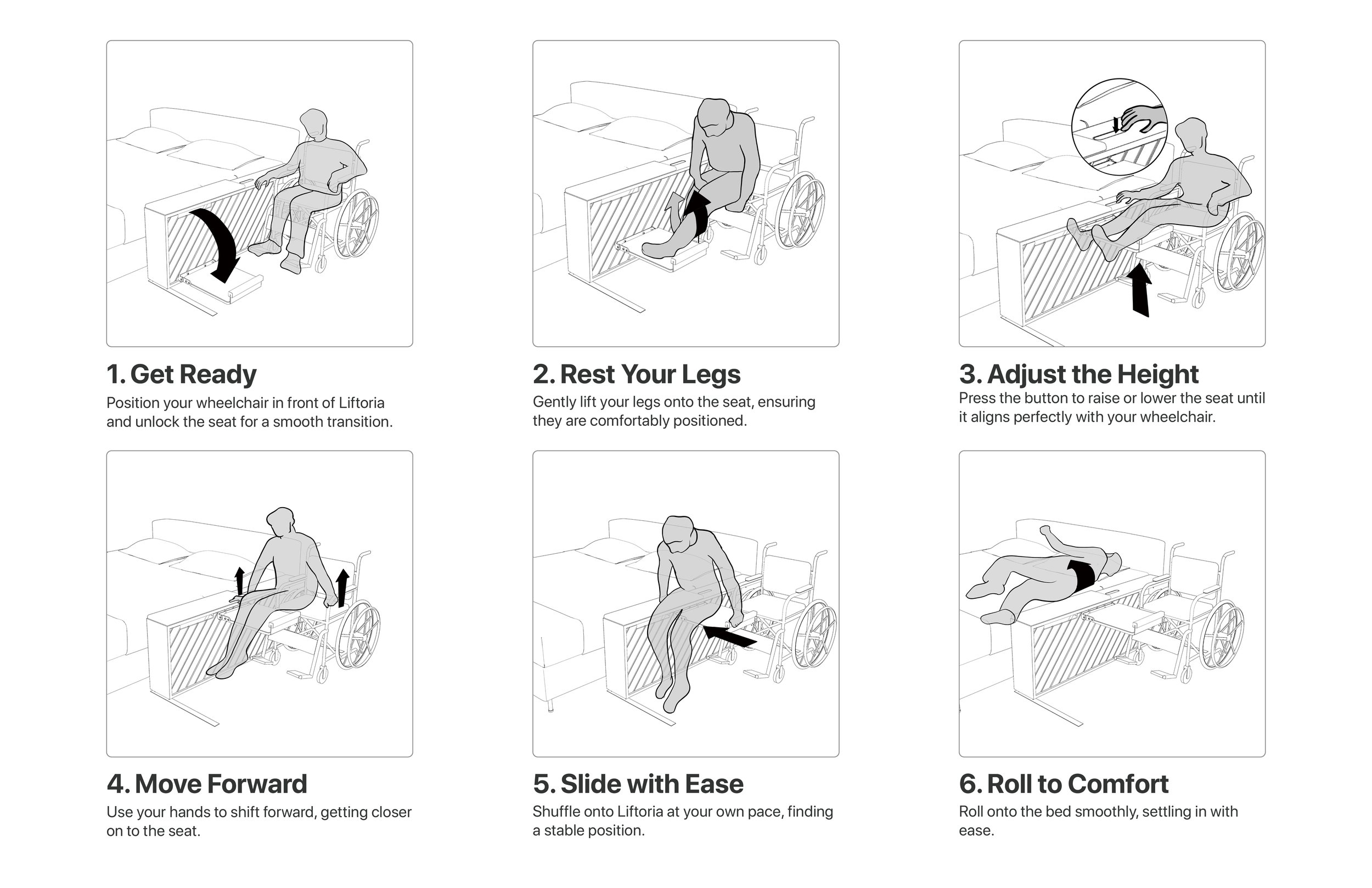liftoria
ASSISTIVE FURNITURE FOR WHEELCHAIR USERS
2025, Group Work, 6 Months
Liftoria is an assistive furniture piece designed to support safe and comfortable transfers between a wheelchair and bed. Its wood construction, natural textures, and integrated storage allow it to blend seamlessly into home environments. Featuring an iron-powered leg lift mechanism with an inclined sliding rail, Liftoria ensures smooth and ergonomic elevation, empowering users with greater agency in their daily lives.
A Seamless Transfer Journey
Built-in Shelf for Everyday Essentials
Soft Touch, Secure Feel
Intuitive Touch Control
PROCESS:
Barriers to Independent and Dignified Bed Transfers
Existing assistive products for bed transfers—like sliding boards, patient lifts, and systems such as UpLyft®—often require external help or involve usability challenges. These limitations make it hard for wheelchair users to transfer safely and independently, impacting not only physical ease but also dignity and autonomy. There remains a clear gap in solutions that are both functional and respectful of users’ everyday needs.
Redefining Assistive Devices as Welcoming Home Furniture
This project aims to empower wheelchair users with a safe and independent way to transfer between bed and wheelchair. Beyond function, it takes a holistic approach by integrating everyday needs to enhance usability and comfort. The design also seeks to transform the cold and clinical image of assistive devices into warm, furniture-like forms that blend into the home and restore a sense of dignity, normalcy, and emotional connection.
Designing for Users Seeking Autonomy in Everyday Life
This project focuses on individuals with mobility disabilities who retain sufficient upper body strength and are capable of performing daily tasks independently. For this group, autonomy is not only physically achievable but also deeply valued. Their desire to complete everyday actions without assistance reflects a strong pursuit of dignity and self-reliance.
Ideation
Multifunctional Transfer Concepts
Form exploration
User Testing for Functional Integration: Transfer + Storage
In exploring various assistive furniture concepts, ranging from sofa-based designs to supportive arm structures, we ultimately chose to focus on a cabinet-integrated transfer system. This direction allows the piece to serve a dual purpose, providing both everyday storage and reliable transfer support. By embedding the assistive mechanism within a familiar furniture form, we can soften the medical image typically associated with mobility aids. At the same time, this approach helps balance the complexity of the mechanism with a seamless user experience, ensuring that the product remains approachable, intuitive, and easy to integrate into daily life.















